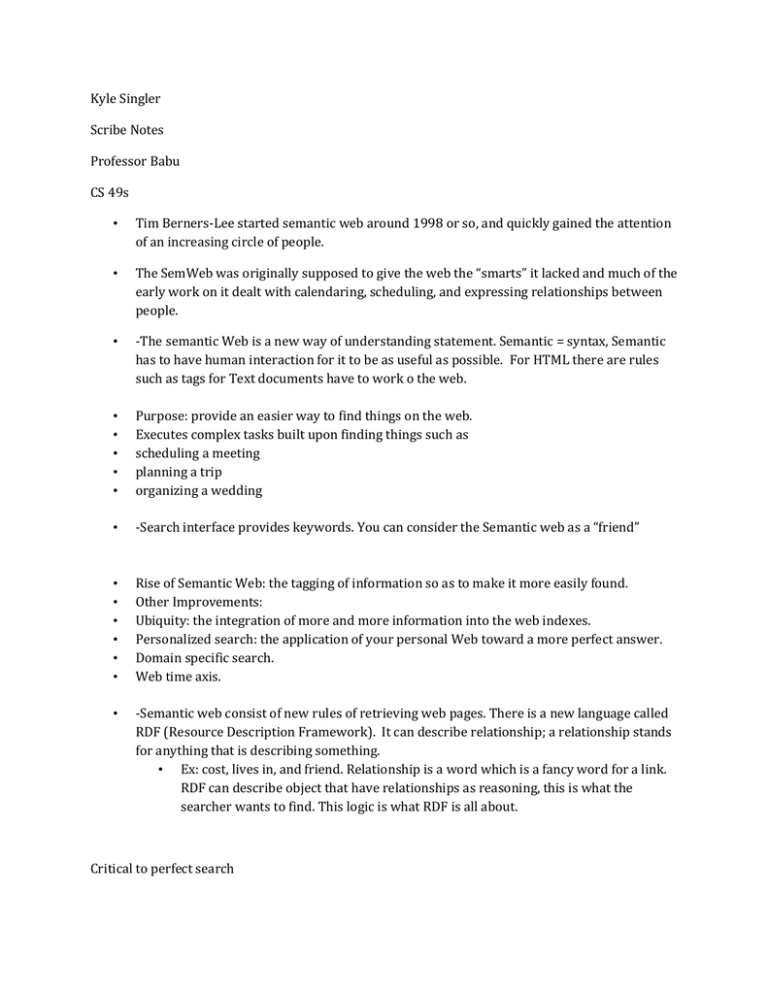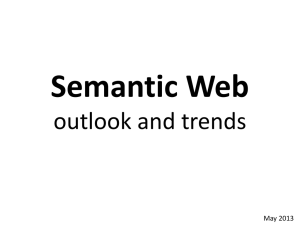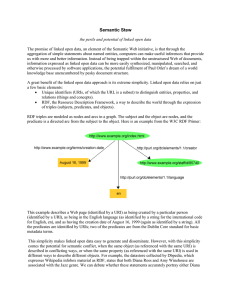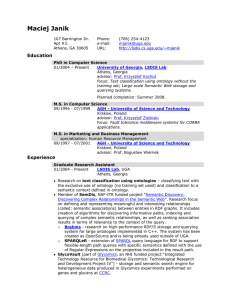Kyle's Notes
advertisement

Kyle Singler Scribe Notes Professor Babu CS 49s • Tim Berners-Lee started semantic web around 1998 or so, and quickly gained the attention of an increasing circle of people. • The SemWeb was originally supposed to give the web the “smarts” it lacked and much of the early work on it dealt with calendaring, scheduling, and expressing relationships between people. • -The semantic Web is a new way of understanding statement. Semantic = syntax, Semantic has to have human interaction for it to be as useful as possible. For HTML there are rules such as tags for Text documents have to work o the web. • • • • • Purpose: provide an easier way to find things on the web. Executes complex tasks built upon finding things such as scheduling a meeting planning a trip organizing a wedding • -Search interface provides keywords. You can consider the Semantic web as a “friend” • • • • • • Rise of Semantic Web: the tagging of information so as to make it more easily found. Other Improvements: Ubiquity: the integration of more and more information into the web indexes. Personalized search: the application of your personal Web toward a more perfect answer. Domain specific search. Web time axis. • -Semantic web consist of new rules of retrieving web pages. There is a new language called RDF (Resource Description Framework). It can describe relationship; a relationship stands for anything that is describing something. • Ex: cost, lives in, and friend. Relationship is a word which is a fancy word for a link. RDF can describe object that have relationships as reasoning, this is what the searcher wants to find. This logic is what RDF is all about. Critical to perfect search • Means nothing if the search engine does not understand your likes and dislikes. Gives every piece of information, such as music or books, and index which makes it easier to find • • • Example Napster: millions of people ripped copies of their favorite music to the Web. It became much easier to find any song on the Web • Taxonomy- is a type of technology which helps the search out by narrowing down what you are looking for. Ex: Music, World, News, Location. Battelle states “Domain specific search solutions focus on one area of knowledge, creating customized search experiences that, because of the domain’s limited corpus and clear relationships between concepts, provide extremely relevant results for searchers”. Domain specific search only searches for things within a specific area, such as cars or computers • Example based on what we’ve learned about Ubiquity and Domain Specific Search • • • When I search for “Jaguar”, the search engine knows to return the car and not the animal Web Time AxisThis archive, never throws away any type of copy relevance to how old the page is which is called a “way back” machine. This is because many people would still want to know information from past years. Such people like the government, teachers, and even users. Allows for a search constrained by date • Specific time period instead of searching for specific dates. You could ask the search engine • “Show me all results for my query from a specific time period” • “Tell me what were the most popular results for ‘George W. Bush’ on May 3, 2004”











